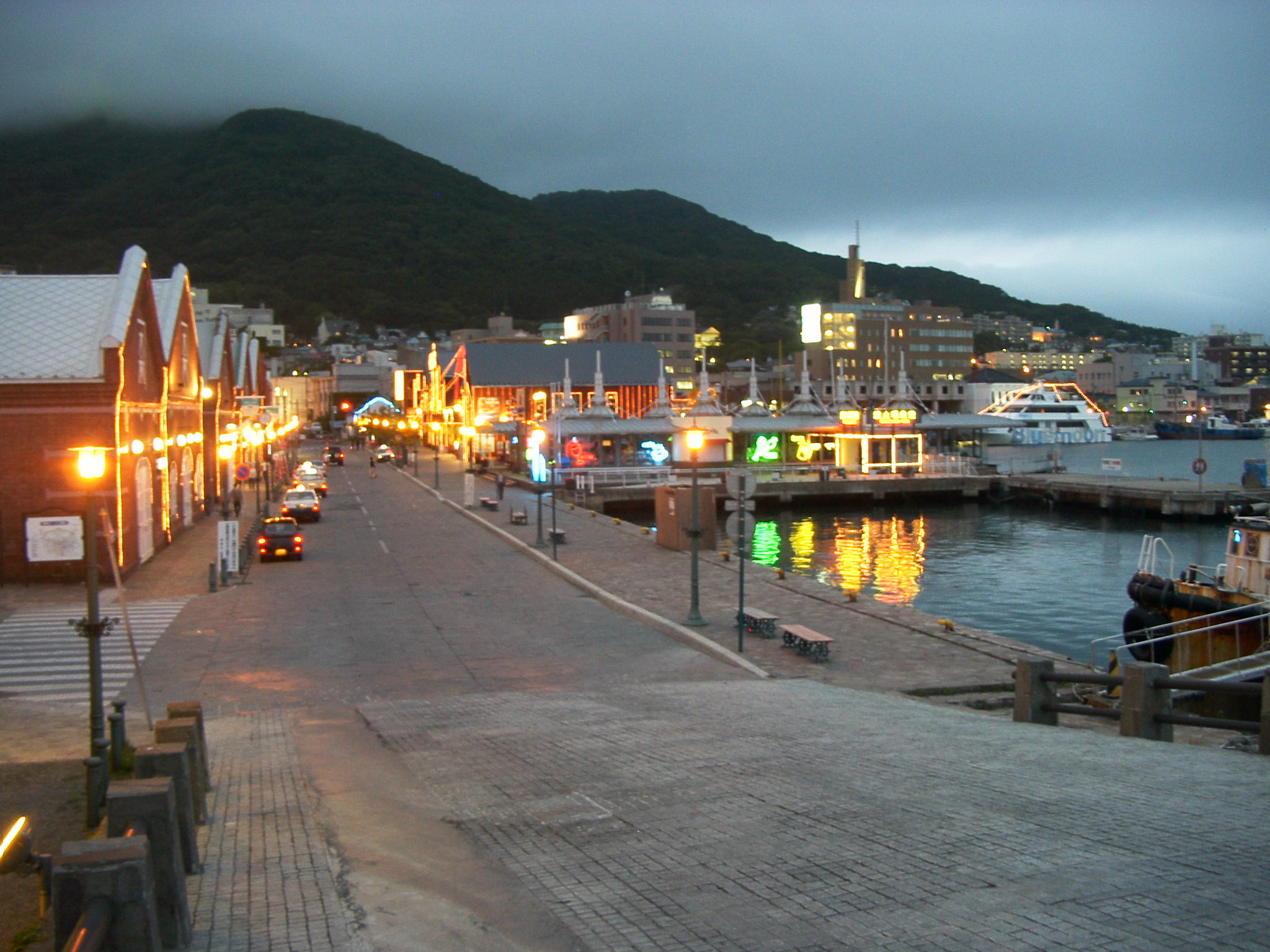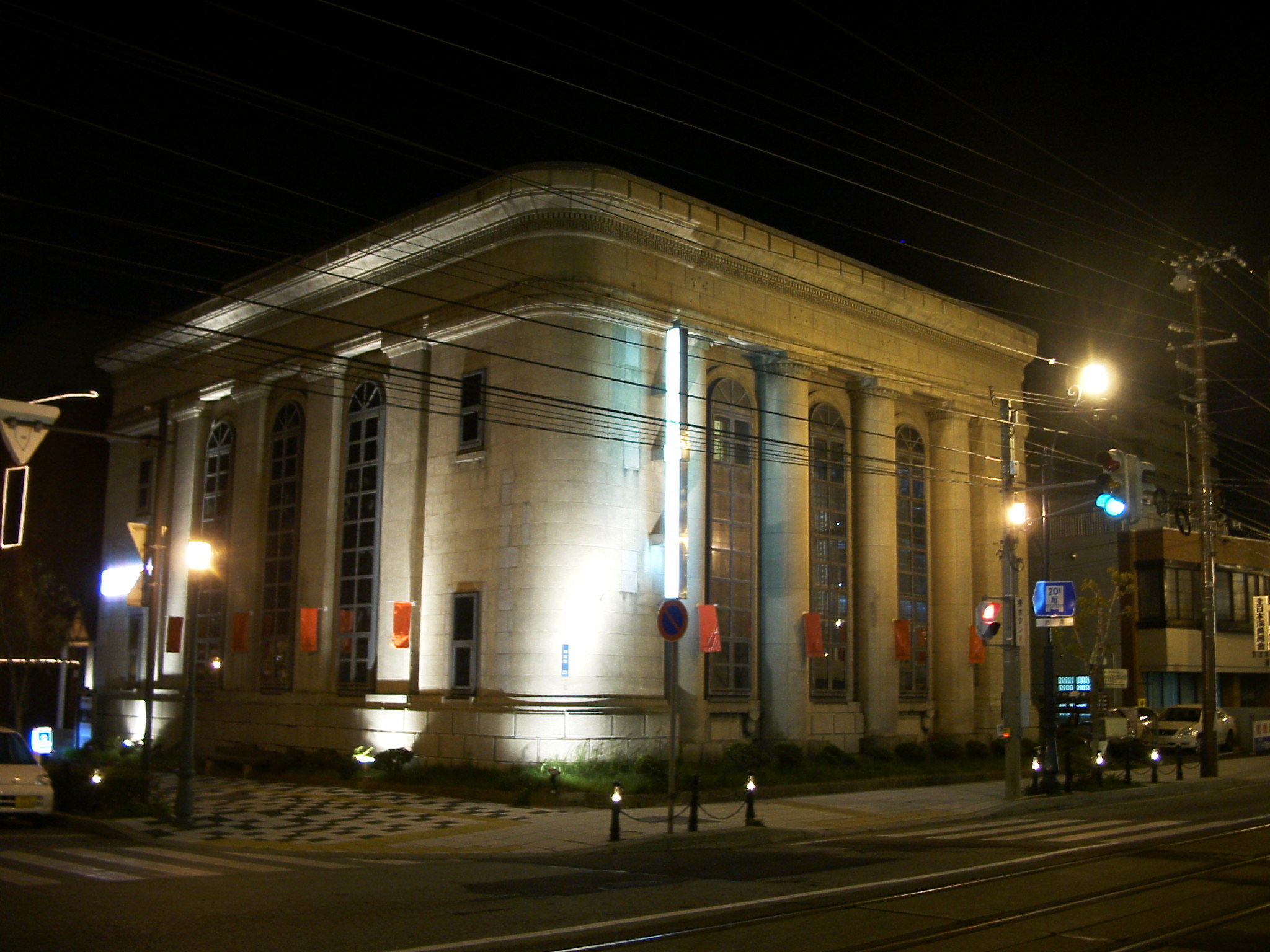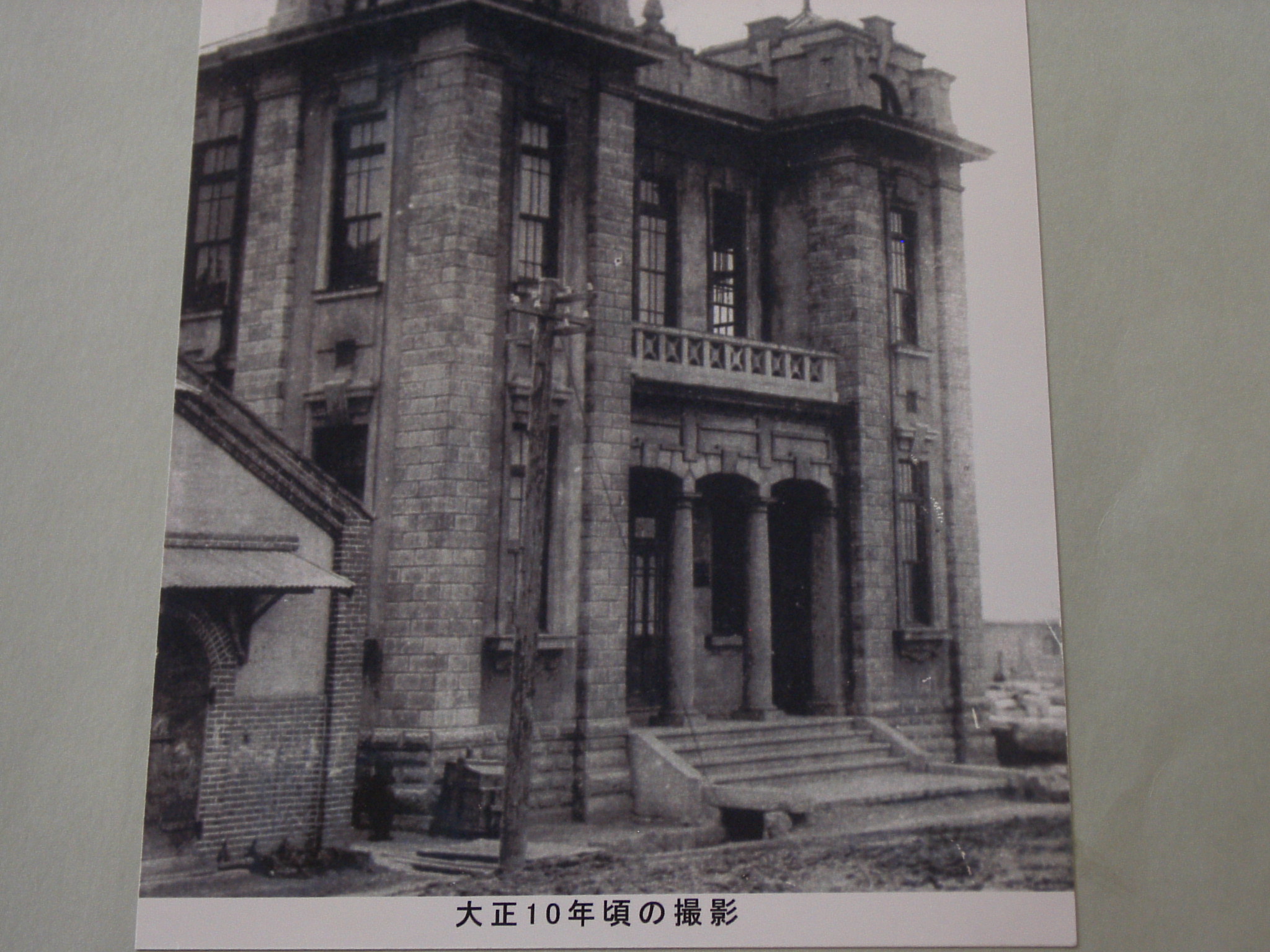This is a reprint of the article that was published in Daily Yomiuri on December 24, 2005.
Wataru Doi Special to The Daily Yomiuri
"I am lucky to have been born here because this city appreciates old buildings with historical value," said Motoko Abe, owner of Tu Prends Du The cafe in Hakodate, Hokkaido.
Abe's cafe is located inside a building called Otemachi House, named after its neighborhood. The structure holds nearly a century of local history within its stout walls. It dates back to 1918, when it was built as the Hakodate branch office of a cement manufacturer.
In 1954, a fishermen's public corporation took over the building from the cement company. However, the building fell into a long period of disuse after the corporation went bankrupt in 1988.
Abe first saw the building in 1996. Its tall, distinctive facade, topped by a pair of boxy cupolas and fronted by thin columns supporting a small balcony, had attracted a film crew who were using it as a backdrop.
"I was among the onlookers crowded around it," Abe recalled. "I fell in love with the building the first time I saw it."
The building had grabbed her heart.
"I went to see the building every day, not missing any single day, for seven years. I was thinking how I could purchase the house."
Abe's level of dedication to a charming old building is hardly common.
In Tokyo, the Empress' childhood home, a 70-year-old building, was demolished in 2003. The old Marunouchi Building, constructed in 1923, was another recent victim of the wrecking ball. And it has been reported that several leading banks are cheerfully planning to tear down the old buildings housing their headquarters to make way for new ones.
"I'm sorry to hear about the situation in Tokyo," says Abe, whose Otemachi, Hakodate, neighborhood is a far cry from Otemachi, Tokyo, where new skyscrapers are popping up one after another. Hakodate, a harbor town at the southern end of Hokkaido, is a place that values its history and heritage.
The refurbishment and reuse of historical buildings by private businesses started relatively early in Hakodate. An important pioneering project was the reuse of the city's post office in Toyokawacho as a private business storage facility in 1961. This admittedly unglamorous purpose was at least enough to keep the building standing, and today the former post office enjoys a vibrant new life under the name Meiji-kan. A shopping mall where glassware and music boxes are sold, the Meiji-kan is now one of the city's sightseeing highlights.
Another good example is the Hotel New Hakodate, in the quaint Motomachi district. The structure was originally built in 1932 as a Hakodate branch of Yasuda Bank, now part of what is Mizuho Bank.
"The current owner took over the hotel from the previous owner two years ago. The previous owner had also used this building as a hotel since 1968," said Makiko Tomiya, a concierge of the hotel.
It might sound stylish and easy to run an antique hotel in a historical harbor town, but the reality is nothing like that.
"Maintaining an old building is full of difficulties. Walls are cracked and pipes are rusty. We are still using metal pipes that were installed when this building was built. We need to take care to keep the water from getting affected by the rust. Leaking rain is another problem," Tomiya said candidly, adding: "Even though we have these problems, we are happy to run this hotel. We love the taste of history that this building represents."
Tomiya says their customers choose the hotel because of the building and its atmosphere. Sometimes foreign travelers stay at the hotel and those from Britain seem to admire the building especially.
Photos by Wataru Doi
The Hotel New Hakodate in the Motomachi district. The structure was originally
built in 1932 as a Hakodate
branch of Yasuda Bank.

Kanamori Red Brick Warehouses, originally
constructed in 1887. The current warehouses
were built after a massive fire in 1907.
Now they are used as a
shooping mall and restaurants.
Otemachi House as photographed in 1932:
Courtesy of Motoko Abe
Hakodate is the town where Japanese internationalization began. When U.S. Commodore Matthew Perry arrived in Japan in 1853 and asked the government to open the country, the government assigned Hakodate as one of two ports that were to be opened to the world. The flow of Western culture into the town has affected Hakodate's architecture ever since.
"One of the significant characteristics of architecture in Hakodate is a mixture of Western and Japanese styles," explained Prof. Yukihiro Kado of Hokkaido University, an architecture expert. "Their ground floors would be designed in Japanese style and the upper floors in Western style. This mixed style creates the town's unique atmosphere and makes views of the town so beautiful."
According to Kado, this unique architectural style became more widespread during the reconstruction of the city after a catastrophic 1907 fire. Compared to other harbor cities where Western-style architecture got an early foothold, Hakodate's uniqueness is that even private houses, not only commercial or government buildings, incorporated Western styles into their architecture, and today's citizens are very eager to protect the town's old buildings.
"In Hakodate, citizens are taking the lead to preserve their heritage, and officials are following," Kado said.
One bureaucrat who has caught the preservationist spirit is an official of the Hakodate Municipal Board of Education's Lifelong Learning Department, which leads various initiatives to protect the old architecture.
"Usually a town preserves old buildings just to boost tourism," said the official who declined to be named. "In our case it has the result of contributing to our tourism, but the original purpose of our activity is to protect the city's cultural assets and hand them down to future generations."
One important role of the department is to search for new owners who can take care of old buildings that prior owners have been forced to give up due to financial hardship or other reasons. The city government "works as a bridge between the old owner and the new owner of the building. We publish information on buildings on sale over the Internet or in [printed] publications. Since we began this service, we've received five or six inquiries [from distressed owners], and a few of them could actually find new owners."
The department also designates historically important buildings as "Historical Architecture." Currently there are 76 registered buildings, gates, houses and other structures. Most of them stand in the Motomachi area and were constructed between the 1850s and 1920s.
The town's construction department prioritizes preserving the historic look of Motomachi.
"There are many beautiful heritage sites in the western part of the city and the appearance of this area is magnificent. We have designated it as the Traditional Building Protection Area," said a department official in charge of maintaining the buildings and the neighborhood's character.
The construction department gives financial support to owners of old buildings in the area. Owners can receive up to 6 million yen for renovation work. The department also sets rules to restrict advertisements and external additions to the buildings. Ugly signboards and glittering neon signs are prohibited, and wouldbe advertisers have to consult with the city beforehand. The concierge Tomiya said, "The rule helps keeps the entire tone of the town unified and it gives it a harmonious feel."
In the middle of the bubble economy, many high-rise apartments were built, disrupting Hakodate's historic feel. To counter this aesthetic crisis, the city took action by setting new rules in 1989 prohibiting buildings whose height exceeded 10 meters.
According to Kado, the demolition of charming old buildings to make way for large, sterile new ones is happening not only in Tokyo, but also in other cities. He once opposed a developer's plan in Sapporo to destroy a private house with historical value to construct a condo. Kado suggested a coexistence of the old and new buildings, but the condo developer finally tore the old house down.
"I don't think everything is going well in Hakodate," Kado said. "But compared to other cities around the country, old architecture is well preserved and the old and new coexist. Most importantly, the enthusiasm of citizens is enormous. Individuals and private organizations are dedicated to preserving the town."
Kado himself serves as the representative of the Hakodate Architecture Study Group.
Currently, the city is seeking new owners for two buildings in Motomachi.
"One was constructed in 1921 and the other in 1911. Both are registered as Historical Architecture," said the official of the lifelong learning department.
The 1921 building has been in search of a new owner since 2003 and the 1911 building was listed this summer.
"We received inquires, but the conditions of the contract couldn't be met. The reason is usually money," the official said.
As for Abe, it was a similar situation that gave her the chance to be the owner of her dream building, where she now runs her cafe. The building was entangled in the demands of its old owner's multiple creditors, and Abe had little hope that would ever change.
"Even if I could not purchase it, I intended to continue visiting the building until it was knocked down," she recalled.
But one day, the building became under control of the Resolution and Collection Corporation and Abe got her chance.
"I purchased the building. I consulted my father, who worked for a construction company, about renovation. At first he said it was almost impossible to renovate it. However, when I showed him the inside of the building, he said it could be saved."
Abe renovated the building to house her cafe and opened it in 2003.
"I want as many people as possible to enjoy this architecture. The reason I made the building a cafe is that customers can enjoy this building by spending just a few hundred yen on a coffee."
Indeed, after you've passed under the fanlight over the front door, you can admire the view from the tall, narrow windows or just sit down and look around, soaking up time.
Eighty years ago, a cement company accountant may have been seated in this very room, sipping a cup of green tea as he contemplated the year-end sales figures. Forty years ago, fishery workers may have sipped something a bit stronger to celebrate a good catch. And eight years ago, Abe was standing in the street outside, admiring a beautiful old building whose history was not yet over.
That's definitely worth the price of a cup of coffee.
(This article was written and posted on December 24, 2005)

